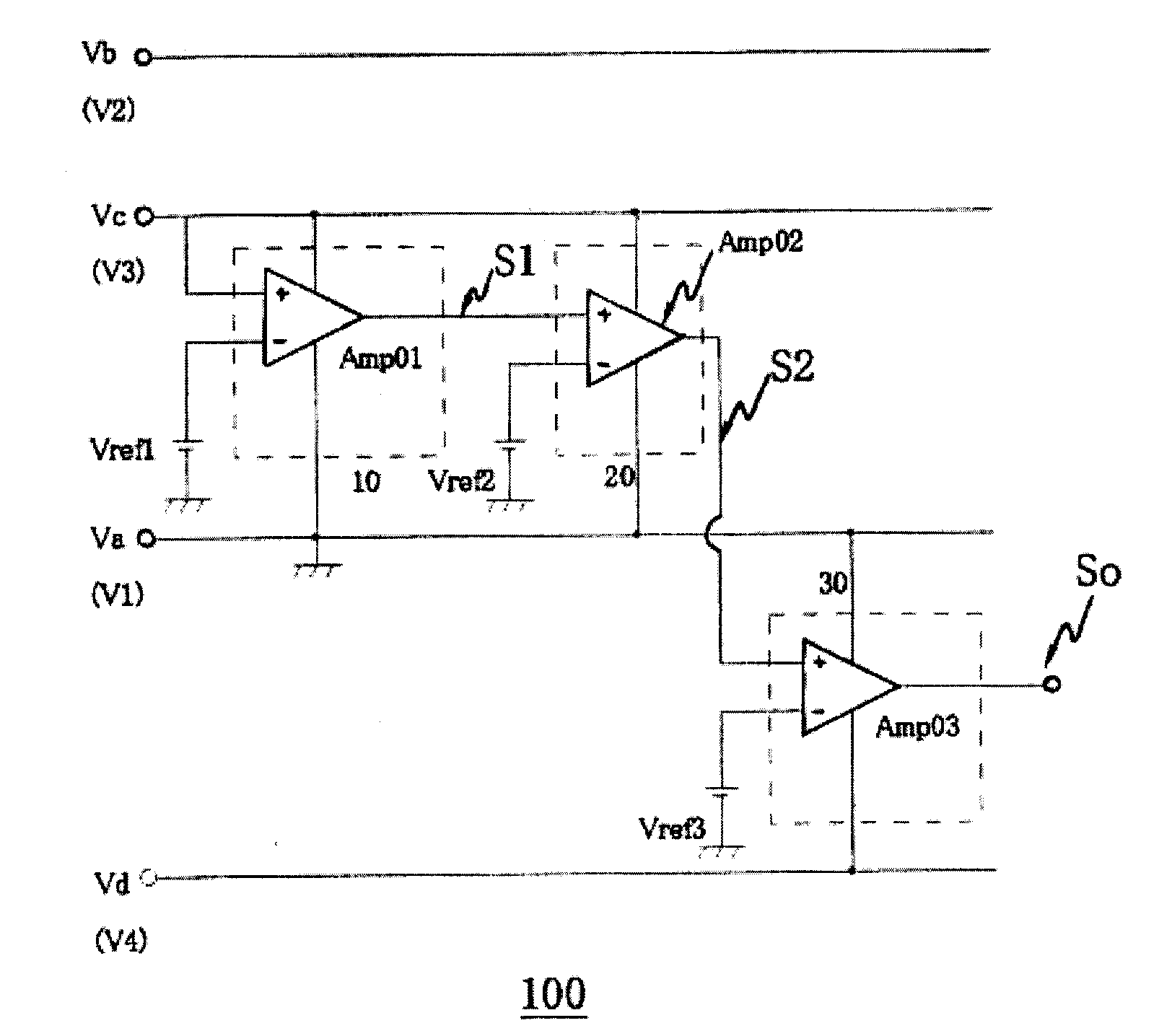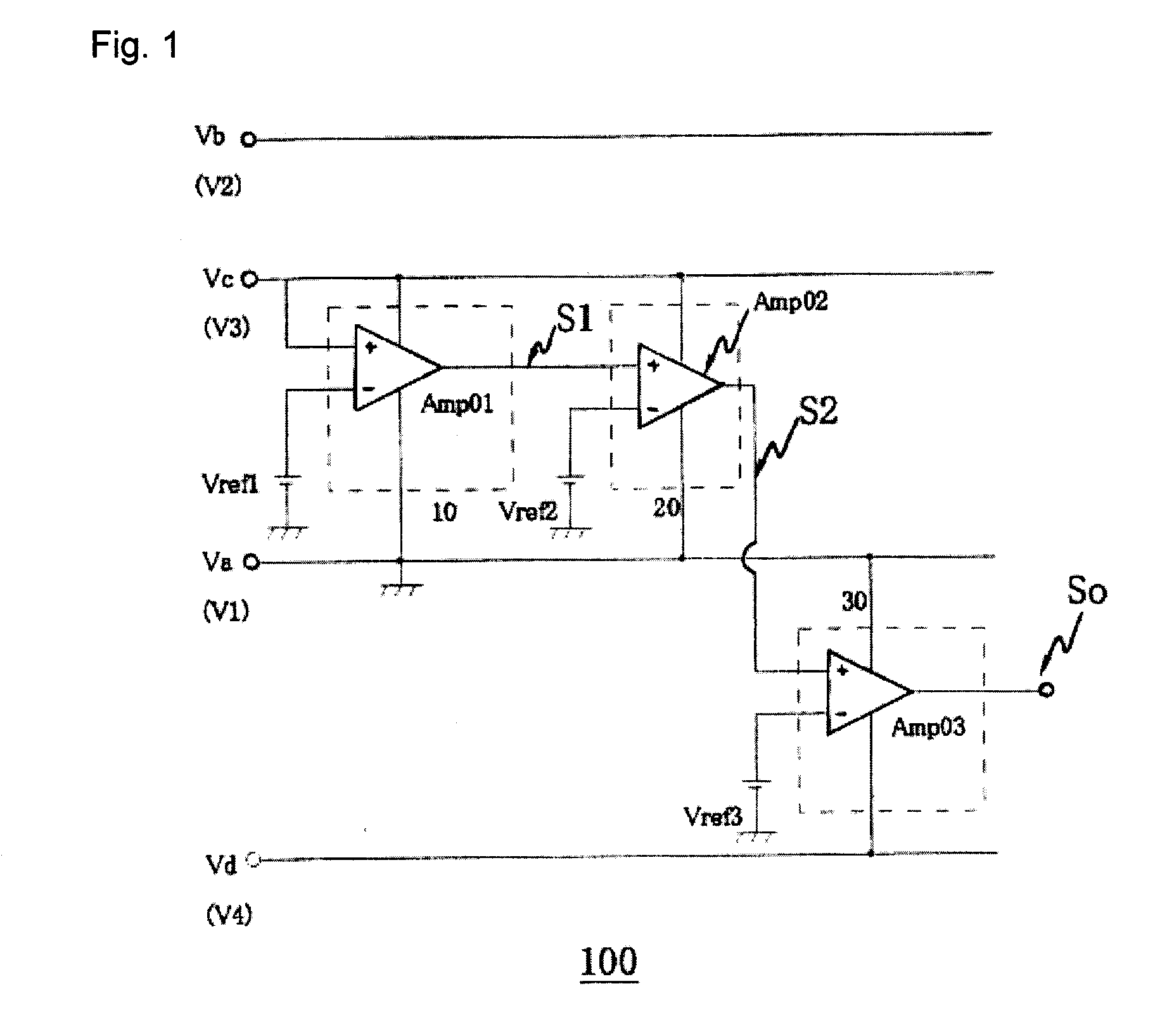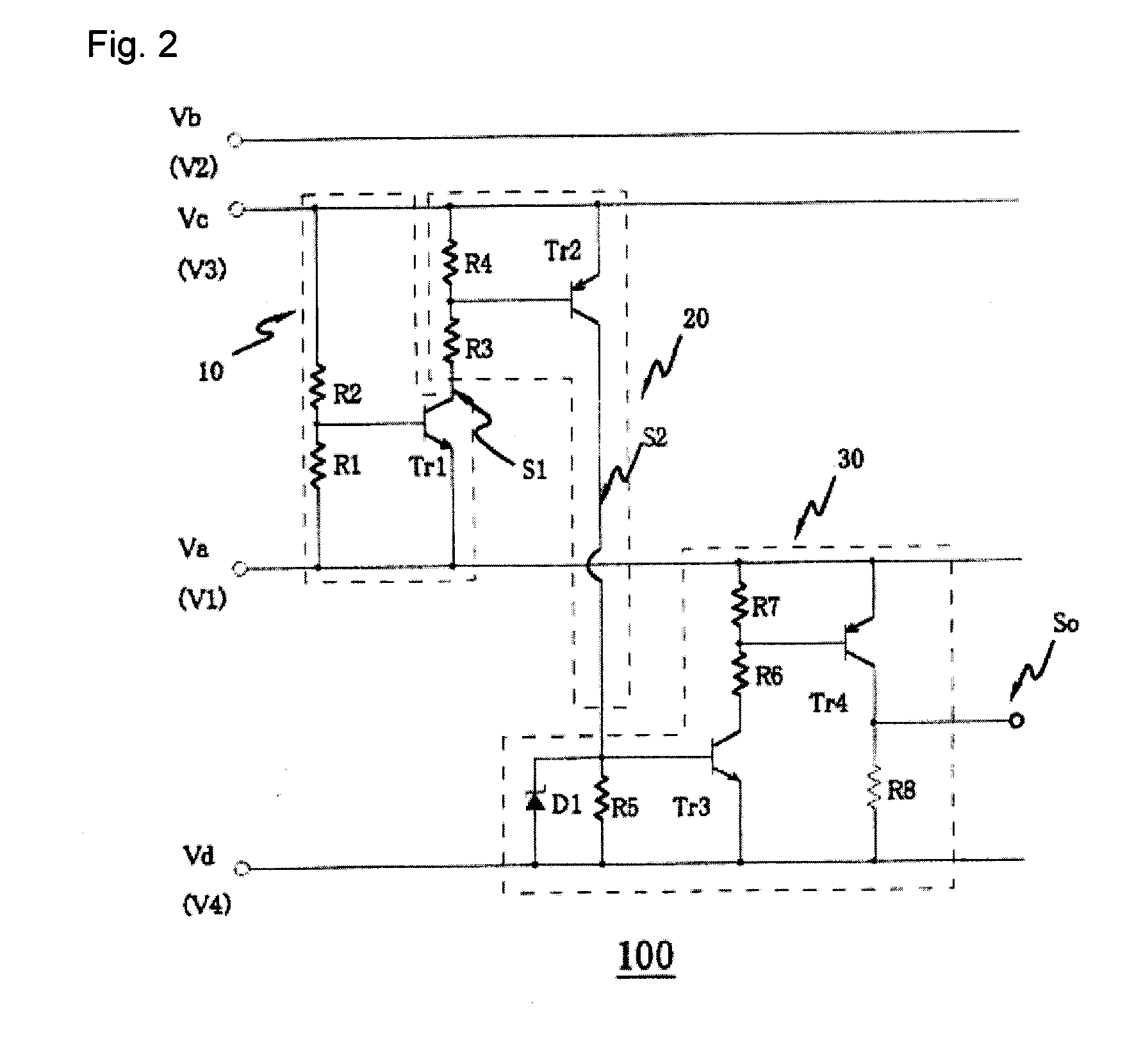Semiconductor device, and power supply device and image pickup device using the same
- Summary
- Abstract
- Description
- Claims
- Application Information
AI Technical Summary
Benefits of technology
Problems solved by technology
Method used
Image
Examples
first preferred embodiment
[0047]FIG. 1 is a diagram showing a first preferred embodiment of a semiconductor device 100 of the present invention. The semiconductor device 100 includes a detection circuit 10, an auxiliary circuit 20, and a signal output circuit 30. A first voltage V1 (e.g., 0 V) is applied to a first terminal Va. A second voltage V2 (e.g., 5 V) is applied to a second terminal Vb. A third voltage V3 which is equal to or higher than the first voltage V1 and which is equal to or lower than the second voltage V2 is applied to a third terminal Vc. A fourth voltage V4 (e.g., −5 V) is applied to a fourth terminal Vd. The relative magnitudes of the respective voltages is such that V2≧V3≧V1>V4.
[0048] The detection circuit 10 is defined by, for instance, a comparator or an error amplifier Amp01; the third terminal Vc is connected to the non-inverting input terminal thereof, while a constant voltage source for producing a first reference voltage Vref1 that is a specified voltage between the first voltag...
second preferred embodiment
[0051]FIG. 2 is diagram showing the arrangement of a second preferred embodiment of the semiconductor device 100 of the present invention. The same numbers are used for the constituent elements that are the same as those shown in FIG. 1, and a detailed description thereof is omitted.
[0052] The detection circuit 10 includes a second resistor R2, one end of which is connected to the third terminal Vc, a first resistor R1 one end of which is connected to the first terminal Va, and the other end of which is connected to the other end of the second resistor R2, and an NPN-type first transistor Tr1 to the base terminal of which the connection point of the first resistor R1 and second resistor R2 is connected, and the emitter terminal of which is connected to the first terminal Va. The collector terminal of the first transistor Tr1 outputs the first output signal S1 as the output terminal of the detection circuit 10.
[0053] The operation of the detection circuit 10 will be described below...
third preferred embodiment
[0060]FIG. 3 is a diagram showing another preferred embodiment of the semiconductor device 100 of the present invention. The same numbers are used for constituent elements that are the same as those shown in FIG. 2, and a detailed description thereof is omitted. Because the only element that is different from FIG. 2 is the auxiliary circuit 20, a description of the detection circuit 10 and signal output circuit 30 is omitted.
[0061] The auxiliary circuit 20 includes a ninth resistor R9, one end of which is connected to the output of the detection circuit 10 (i.e., the collector terminal of the first transistor Tr1); an input-side transistor Tr5 of a current mirror the emitter terminal of which is connected to the third terminal Vc, and into which the first output signal S1 is input via the ninth resistor R9; and an output-side transistor Tr6 of the current mirror. Furthermore, the collector terminal of the output-side transistor Tr6 of the current mirror outputs the second output si...
PUM
 Login to View More
Login to View More Abstract
Description
Claims
Application Information
 Login to View More
Login to View More - R&D
- Intellectual Property
- Life Sciences
- Materials
- Tech Scout
- Unparalleled Data Quality
- Higher Quality Content
- 60% Fewer Hallucinations
Browse by: Latest US Patents, China's latest patents, Technical Efficacy Thesaurus, Application Domain, Technology Topic, Popular Technical Reports.
© 2025 PatSnap. All rights reserved.Legal|Privacy policy|Modern Slavery Act Transparency Statement|Sitemap|About US| Contact US: help@patsnap.com



